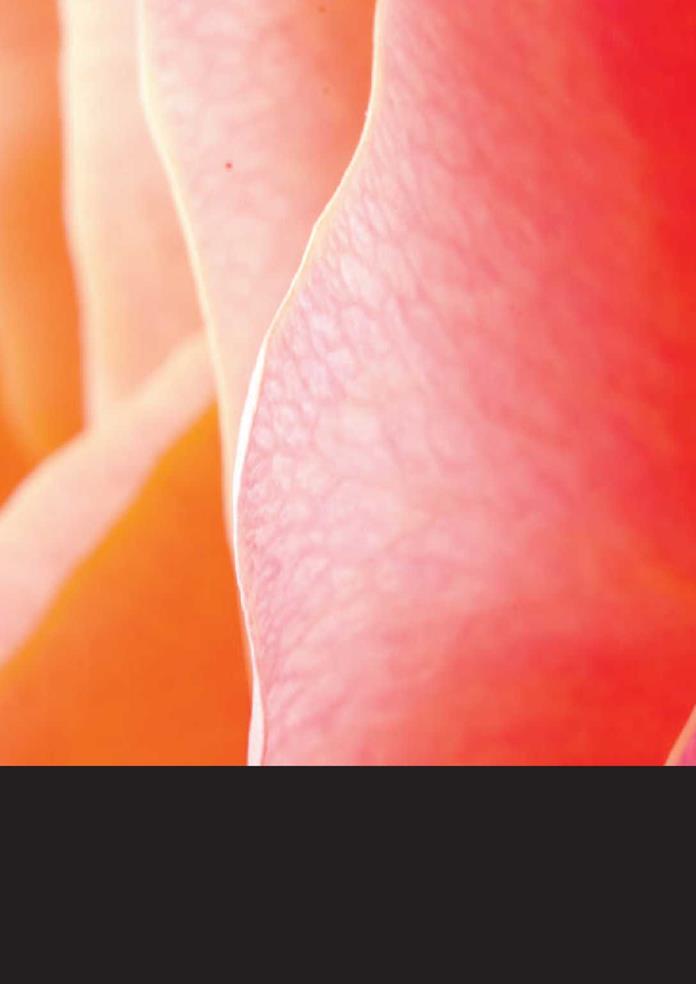The more often you practice drawing skills, the better you’ll translate that into makeup applications. Learn to see faces as planes, edges, and shadows or a living sculpture. The first lesson is a basic exercise in
observation and letting go—two skills a Makeup Artist will use often. Lessons Three and Four will train your mind to see faces and objects as shapes. For all the lessons, you never want to erase.
Lesson One: Contour Drawing
This lesson should be repeated using a different part of the body each time (hand, torso, arms, and so on).
1. Choose a face or figure. (Use a live model.)
2. While staring at the model, put your pencil down onto the drawing paper at the point where you want to start.
3. Follow the edge of the form with your pencil (without lifting the pencil) onto your paper without looking down at what you are drawing.
4. After moving around the edges of the object, move your pencil inside the object. Draw the contours and planes of the inside features without lifting your pencil.
5. Now look down at your work. Add any shadows or highlights to your drawing.
Lesson Two: Contour Drawing
1. Choose several (three or four) photos of faces from a magazine.
2. Repeating the steps in Lesson One, do a contour drawing of each photo.
3. Using carbon paper, transfer each drawing that you finish onto a clean sheet of paper, overlaying each drawing
on top of the other, creating your own design.
4. When you are done with step 3,
above, fill in any shadows, highlights, or textures around and inside the drawings.
Lesson Three: Shadows
This lesson will enable you to see faces and
objects in different shapes created by light
and dark.
1. Find a photo of an interesting face with a lot of contrast.
2. On a clean sheet of paper, re-create the face in the photo using only the shapes of the shadows and highlights. Try not to use any lines. If this is difficult, you can work on one area of the face at a time (nose, eyes, lips, chin, and so on).
Lesson Four: Shadows
1. Take a cloth of some sort—for example, a light-colored sheet.
2. Bunch the sheet up into peaks and valleys.
3. Set a simple light source over the sheet.
4. Observe how the cloth looks under the light. Where do the shadows fall with each crease?
5. With a pencil, draw the sheet using simple outlines and only shadows, taking up the whole artist paper. Your design should go off the edges of the paper. At the end, your material can have a look of fluid movement or even resemble a mountaintop.
Barcsay, Jeno. 2006. “Anatomy for the Artist” from The Center of Gravity. New York: Sterling Publishing Co. Inc.
Feher, Gyorgy. 2006. Cyclopedia Anatomicae. New York: Black Dog and Leventhal Publishers.
Gheno, Dan. www. dangheno. net (adapted from Starting a Figure Drawing From Life. American Artist, 17).
Jusko, Don. Human Proportions and Painting. www. realcolorwheel. com.
McNeil, Daniel. 1998. Constellation of Desire, The Skin Code. Boston: Little Brown and Company.
|
|
![]()
![]()
Anatomy is important for the Makeup Artist. Makeup Artists who are asked to create anything that is directly related to the human body will study the vascular, muscular, and skeletal systems to correctly interpret how the makeup or appliance will be executed. The muscles that help form facial expressions, support the skeletal system, and protect internal organs are just as important to the Makeup Artist as how the body moves and the center of gravity. Understanding the vascular system adds to our knowledge of how to achieve realistic trauma. There are countless books on the subject, and we highly recommend owning a collection of anatomy books as well as medical reference books.
Anatomy is the study of the human body. The skeletal system is the physical foundation of the body, with 206 bones of different sizes and shapes. The skeleton is for the most part moved by muscles acting as levers. Bones can be classified as long, short, or flat. Joints are two or more bones that fit together. One of the functions for facial bones is determining the high and low planes of the face—characteristics that make us all different from each other. The primary function of the skeletal system is to support the body, protect internal organs, serve as attachments for muscles, produce white and red blood cells, and store calcium. The skeletal system is divided into two different areas: the axial and the appendicular. The axial makes up the skull, vertebral column, sternum, and ribs. The appendicular is made up of the upper and lower extremities.
The skull of the skeleton is also divided into two parts: the cranium, which protects the brain and has eight bones, and the facial skeleton, which is made up of 14 bones.
Figures 2.1 and 2.2 show the surface anatomy of the face and Figure 2.3 the skeleton system.

